It is never a dull affair when Barcelona meet Real Betis, and the venue rarely plays any significant difference in that sense. Countless times we have seen the Blaugrana triumph over the green and whites, and countless times have we seen the Seville-based men make a dent in the Catalans’ armour. This Sunday evening clash was no different, but Barcelona were once again victorious by a hefty margin.
Quique Setien masterminded another way of dominating the La Liga leaders but his team lacked their scoring boots to bring this one home. Ernesto Valverde, on the other hand, also showed up with a tactic that seemed to work flawlessly against a free-flowing, attacking-minded Real Betis, but having Lionel Messi on his side did help out just a tiny bit.
This tactical analysis will use statistics to determine just how Barcelona dismantled Real Betis even though the hosts were the more proactive and seemed the more dominant team on the pitch.
Lineups
Barcelona (4-4-2)
Starting XI: Ter Stegen – Sergi, Pique, Lenglet, Alba – Rakitić, Busquets, Arthur – Messi, Suarez, Vidal
Bench: Cillessen, Semedo, Umtiti, Aleñá, Coutinho, Boateng, Malcom
Coach: Ernesto Valverde
Real Betis (3-5-2)
Starting XI: Pau Lopez – Mandi, Bartra, Sidnei – Joaquin, Carvalho, Guardado, Tello – Lo Celso, Jese, Canales
Bench: Joel Robles, Emerson, Feddal, Kaptoum, Lainez, Sergio Leon, Loren
Coach: Quique Setien
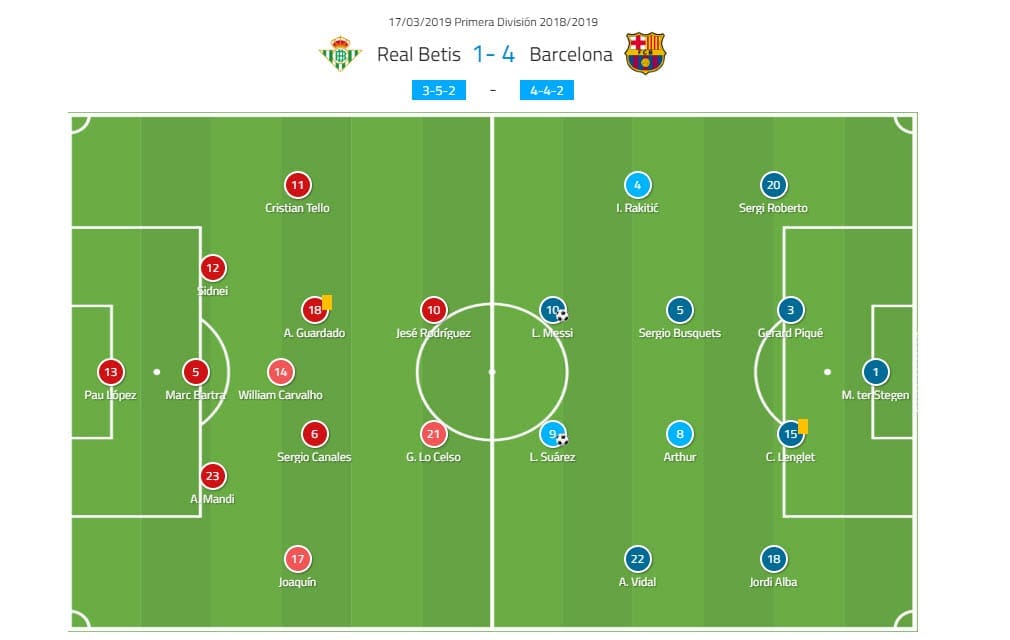
Barcelona’s setup
Ernesto Valverde and the boys from the Catalan capital had some extra motivation to win this game after seeing Atletico Madrid, their main rival for the La Liga title, lose to Athletic Club a day prior to this match. With that in mind, the Ant mustered a squad that closely resembled his best XI, not taking some injuries into the equation.
Ousmane Dembele will be out for a couple of weeks following the hamstring injury he suffered in the game against Lyon in the Champions League, and the Frenchman is currently the only notable man on the injury list. Valverde decided against going for a like-for-like substitution, so both Philippe Coutinho and Malcom were left on the bench, and the team adopted a different formation instead.
The midfield trident, therefore, became a quartet, with Lionel Messi and Luis Suarez being the only two forwards for Barcelona. Arturo Vidal joined Arthur Melo, Ivan Rakitić and Sergio Busquets in the middle of the park, while the back four remained unchanged, and Sergi Roberto was once again chosen ahead of Nelson Semedo.
The team operated in a 4-4-2 system throughout the whole game with no notable changes.
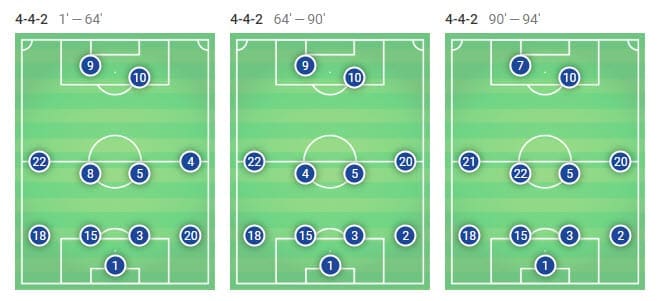
Real Betis’ setup
Having beaten Barcelona in the first of the two encounters of these teams in the Spanish domestic league, Quique Setien knew what worked and how to slay the giant that is Barcelona. With that in mind, he made minimal changes to his preferred lineup.
Mostly all personnel that took part in the 3-4 goal fest at the Camp Nou returned to witness the situation reverse at Benito Villamarin this Wednesday. Surprisingly, Loren Moron, who was a major part in the victory in Catalunya, was benched, and so was Junior Firpo. The only change from Real Betis’ last La Liga game was Cristian Tello for Francis Guerrero.
Once again, there were five men in midfield for Setien’s troops, leaving only Sidnei, ex-Barcelona boy Marc Bartra and Aissa Mandi in front of Pau Lopez. Jese and Giovani Lo Celso were the two forwards, while Tello, Guardado, Canales and Joaquin were in the middle, and behind them, the sole defensive midfielder, William Carvalho.
Real Betis were deployed in an interesting 3-5-2 system but that transitioned to a 3-4-3 later on in the game.
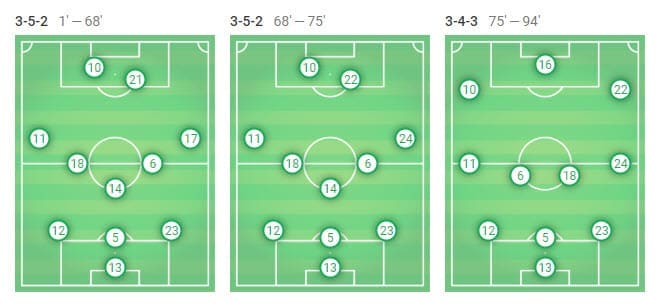
Real Betis start strongly
When two teams following similar ideologies meet, and when those ideologies involve constant attacking with spectacular pressing and passing games, their matches are bound to be extremely entertaining. This match was exactly that.
Real Betis were, dare I say even unsurprisingly, the more dominant team on the Villamarin pitch and they showed their dominance right from the start. Instead of simply pushing Barcelona back and cornering them, like most teams do when they try to contest the power struggle with the Catalans, the Seville men instead took the ball and kept it by beating Barcelona at their own game.
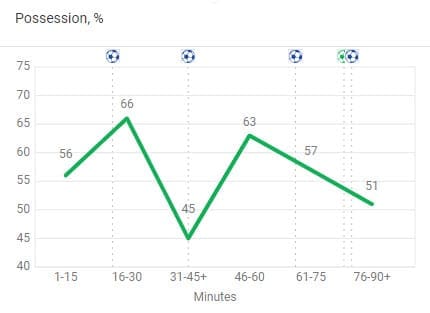
The home team dominated possession throughout the majority of the match, and they even ended it with more time on the ball than the Catalans. What’s even more interesting is that this was Barcelona’s first victory in which they’ve had lower possession than the opposition in the last decade. Just for comparison’s sake and to amplify this huge Real Betis achievement, Barcelona have dominated possession in 405 out of the last 410 games in La Liga.
But how exactly did Real Betis manage that feat? In short, it was pretty simple. Starting with Quique Setien’s formation, 3-5-2, we can immediately notice that the core goal was to create a numerical superiority in the midfield at all times, which was made even easier for the hosts since their forwards would constantly drop deeper to create additional passing options.
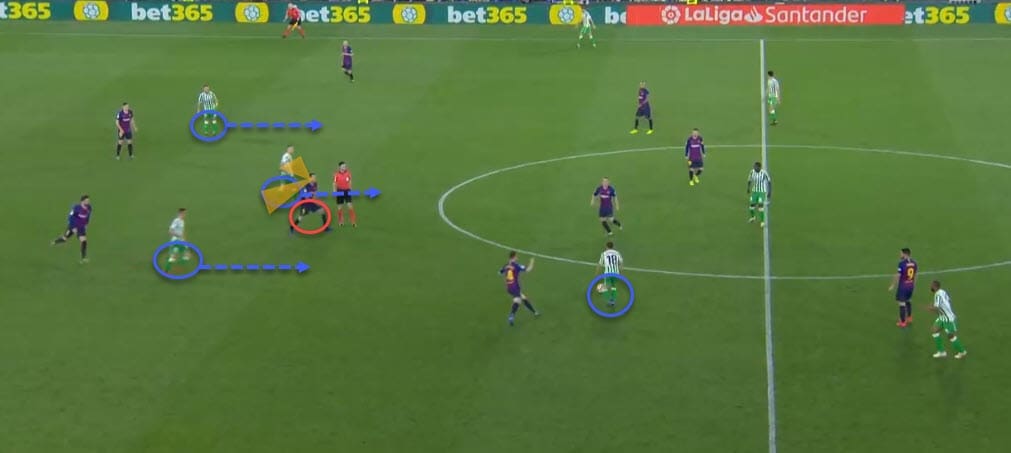
Notice in the image above how Sergio Busquets suddenly becomes isolated and surrounded by Real Betis players, and has to block the channel for two markers instead of he himself creating a superiority in the middle by going a bit forward.
Suddenly, Betis would have six or even seven players constantly swarming the midfield, while their full-backs did the attacking part. For the most part, this plan seemed to work as the home team took control and started creating numerous chances at the very beginning of the match.
The trick was to keep the tempo as high as possible and to apply and sustain the pressure throughout the whole game. Real Betis were relentless in their pressing tactics which they deployed from the get-go.
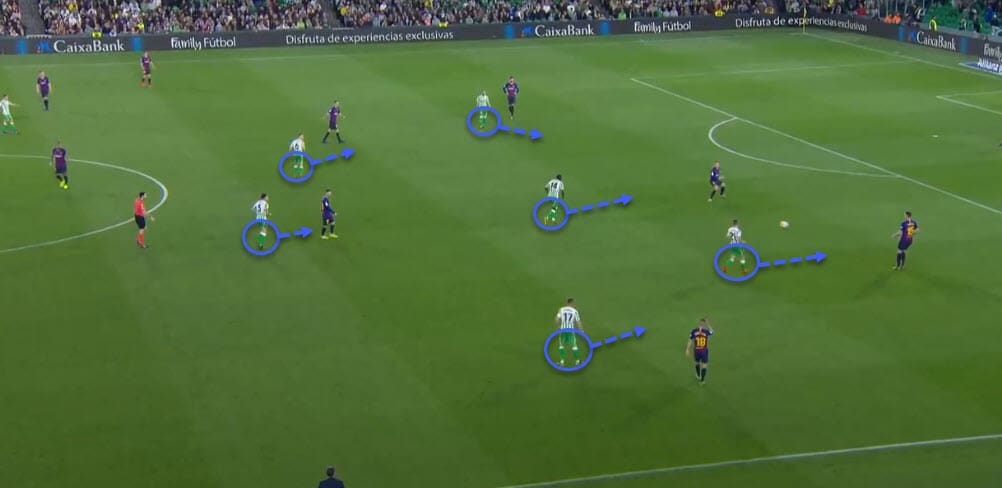
This example shows how the green and whites pressed Barcelona’s back line and forced them to go back to the goalkeeper. They rarely pressed all the way to Marc-Andre ter Stegen but instead stopped at the edge of the box, assuming their tight man-marking positions and closing down all and any passing channels for the German.
This did work to an extent, as Barcelona were struggling to get the ball across the middle of the field, and more importantly, they struggled to keep possession of it. This is how it looked when the Catalans’ man between the sticks had a goal kick or was about to distribute the ball higher up the pitch.
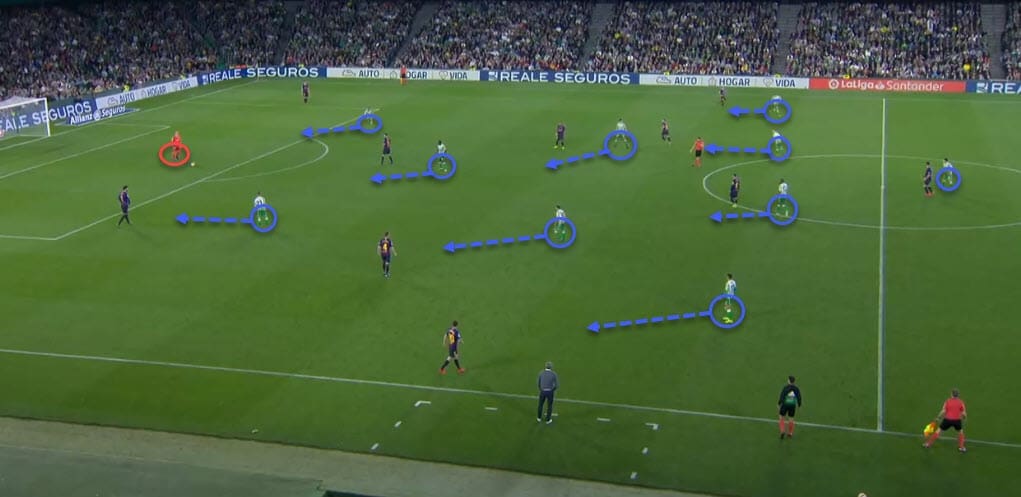
Right from the start, it seemed like Real Betis had all the control of the game, and were well on their way to another victory over Barcelona. However, Ernesto Valverde had a couple of tricks of his own up his sleeve.
Barcelona came well prepared
There were a couple of key elements and crucial changes Ernesto Valverde made prior to the game that made Barcelona even more dangerous despite the fact the possession was, for once, not in their favour.
Quique Setien’s 3-5-2 formation is definitely an interesting one, and something worth noting, but it’s also his most used one at 29% so saying that it was a surprise when he deployed it would be quite a stretch. We can’t know for certain what Valverde was thinking but it is safe to assume that he predicted that Real Betis would indeed combat his troops in such a setup. For that reason, he countered it with a variation of his favourite 4-4-2 formation.
The reason I say ‘a variation’ is because it was not his standard 4-4-2 in which the two wide midfielders are, in fact, wingers who stretch the opposition. Instead, there are four true midfielders, each with a role of his own.

This diamond shape midfield was not really used by Valverde prior to this game so it’s something new, and definitely something the Basque coach pulled out of the hat. But it was well-prepared and choreographed.
In this scenario, Ivan Rakitić and Arturo Vidal act as wide men, and Barcelona press in various ways, always starting with Lionel Messi and Luis Suarez. At times, this looked like simply throwing numbers up front, as can be seen below when Blaugrana pressurise Pau Lopez, but it was much more than that.
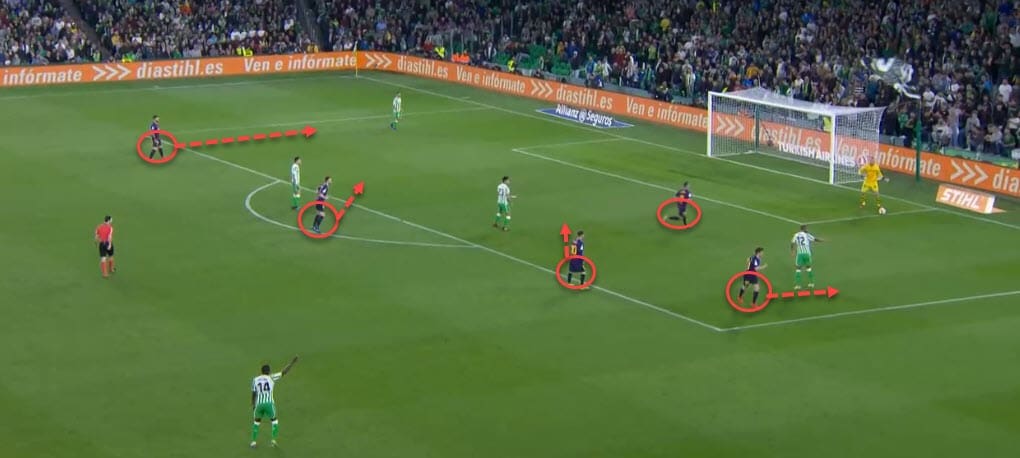
Barcelona had distinct pressure triggers throughout the match, each activating a different variation of their pressing tactic. If and when Real Betis successfully bypassed the front line, in which Messi and Suarez had a task of covering Carvalho, and one of the midfielders was deployed in a higher line, Barcelona would revert to a 4-4-2 mid or low block, depending on the progress made by their opposition.
At the beginning, both the Argentine and the Uruguayan raced to pressurise the ball-carriers but that was not the case for every instant of the game. When that was not done, their horizontal positioning made it easy for Betis to connect their first and second thirds.
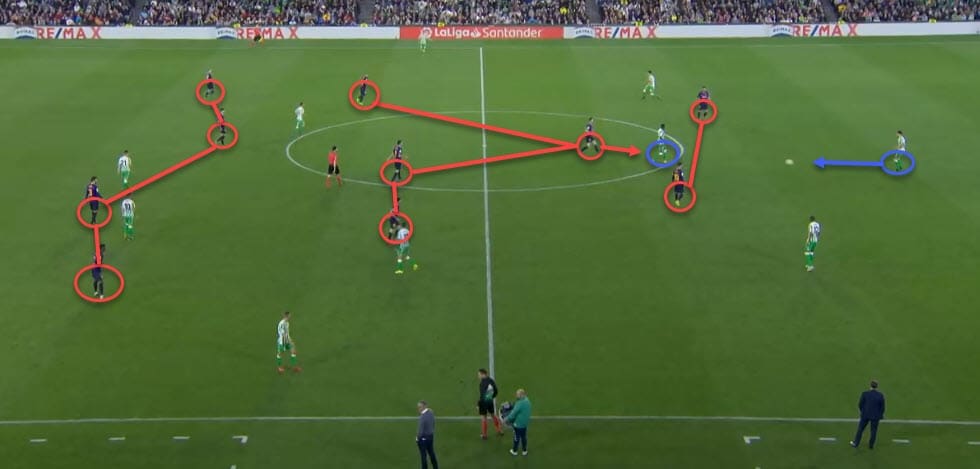
When that happened, Barcelona would send one player at a time to repel the progress. In this case Ivan Rakitić steps forward, and as the ball is sent backwards again, Rakitić retreats as well. When Arturo Vidal was still in the game, and in command of that left side of the midfield quartet, he was instructed to put pressure on Mandi, while Alba did the same with Joaquin.
The forwards, namely Messi and Suarez, kept tabs on Bartra and Sidnei, while the other three midfielders supported the press by overcrowding the side the ball was on, in this instance, Real Betis’ favourite right flank.
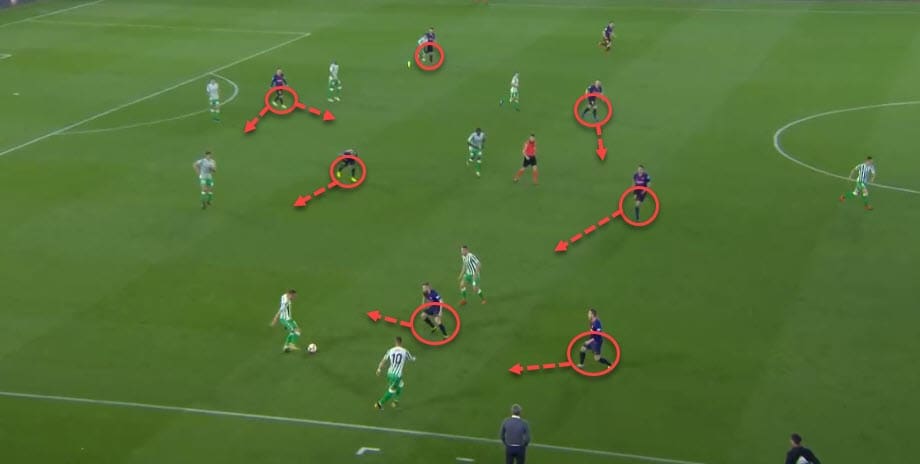
This movement, if implemented correctly, would either cost Betis the ball or force them back to Pau Lopez, which was a win-win scenario for Barcelona. In the case of the latter situation, which was a different press trigger, the Catalans organised themselves in a different fashion.
The Messi-Suarez tandem remained positioned the same as before, and the midfield quartet each had a task of marking one man. Jordi Alba and Sergi Roberto had quite an interesting role, though, which can be seen in the image below.
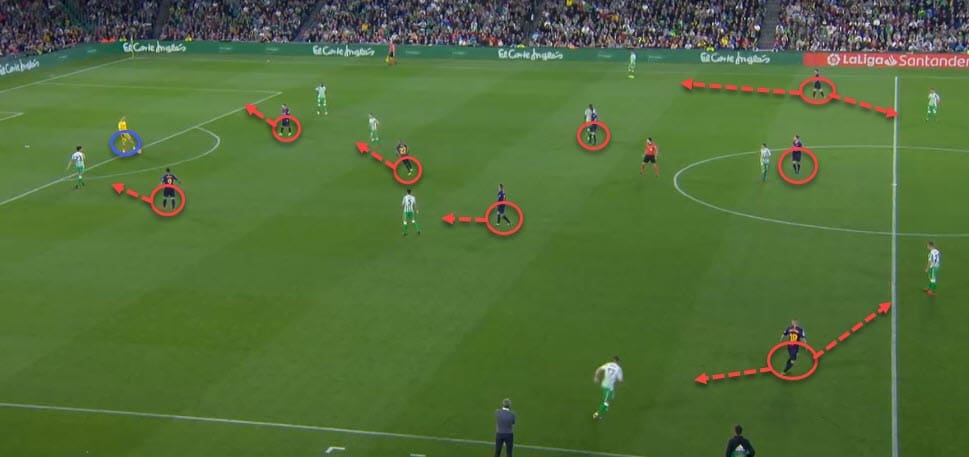
Notice how both of Barcelona’s full-backs are positioned between Real Betis’ opposite full-back and the man higher up the pitch. This was done to ensure Barcelona didn’t get picked off by long balls to the forwards and that they were never overcrowded in those areas.
When Lopez moves the ball towards Lo Celso, Joaquin and co., Alba quickly drops deeper and is assisted by Clement Lenglet to make it an even 2v2 battle. The same would have happened had Lopez opted for his left flank, but it would have been an even worse scenario for Betis as there Roberto and Pique had a 2v1 advantage against the lone attacker.
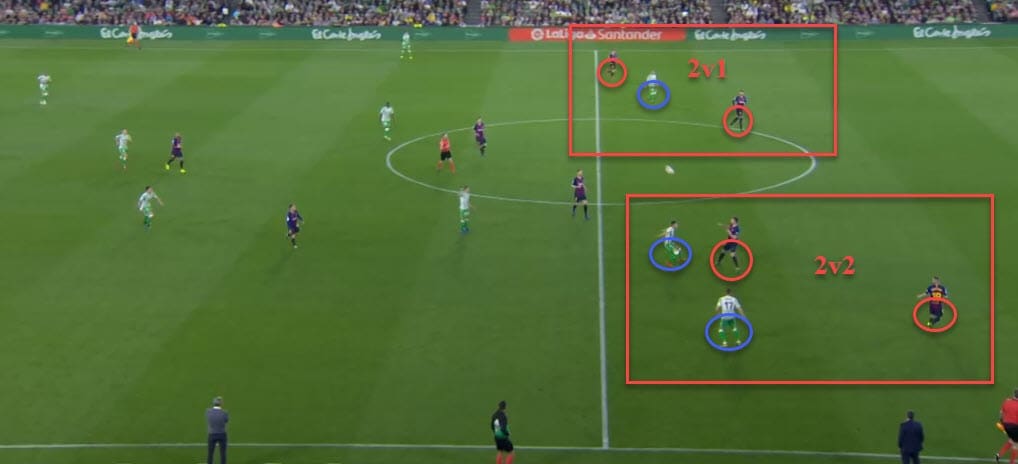
By successfully pressing their hosts, Barcelona managed to keep themselves out of harm’s way but it has to be said that Real Betis had their chances. The thing is they did not take any of them, and when that happens, football punishes you.
Real Betis attack well but forget how to defend
Setien’s team created quite a web of passes, and funnily enough, apart from beating Barcelona at the possession game, they also made more passes than the Catalans, albeit slightly less accurately (88.72% for Barcelona vs 87.76% for Betis).
Real Betis really threw everything at Barcelona, orchestrating attack after attack despite the away team’s almost immaculate pressing game. Still, two things prevented Setien from triumphing over Barcelona for the second time in this La Liga season: a failure to defend and finish actions properly.
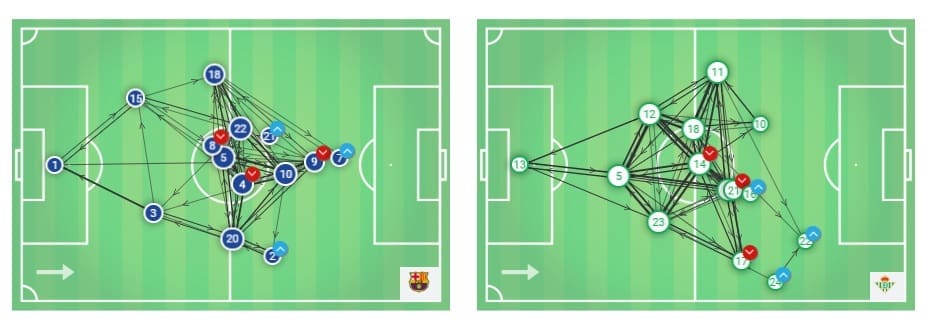
When these two teams met for the first time this season, Real Betis were brutal in transitions and Barcelona couldn’t retaliate with enough pressure. It’s worth noting that Arturo Vidal was not present and Loren Moron was in the squad back then, which gave Betis a link between the defence and the midfield, which was often non-existent this time round when trying to bypass the extreme press.
Combine that with some faulty defence, and a couple of missed chances and instead of celebrating a victory, you are suddenly four goals down. Still, Barcelona had an unfair advantage in the form of Lionel Messi and, it has to be said, a fabulous, vintage Liverpool and prime Barcelona Luis Suarez.
Messi’s hat-trick, which saw him receive applause from the whole stadium, and Suarez’s remarkable solo goal and unbelievable back-heel assist sealed the deal for Barcelona. The Uruguayan equalled Diego Forlan’s record and the tandem are now joined highest Uruguayan goalscorers in La Liga, although that should change pretty quickly.
As for Messi, it was nothing new really. The Argentine has now surpassed the legendary Xavi Hernandez as the player with the most wins in the Blaugrana shirt with a total of 477 in 674 appearances. But that doesn’t even begin to describe his brilliance.
He is now the first player to score 13 away hat-tricks in La Liga, is Europe’s best goalscorer, assister, chance creator, the player with most free-kick goals, goals from outside the box, and the player with most key passes. In the 2018/19 season alone, he has scored 39 goals in 37 games, assisting 18 and hit the bar 12 times. The list could go on…
Even though Real Betis covered Marc-Andre ter Stegen exceptionally well on the night, Barcelona still managed to create chances through the German goalkeeper. Barcelona successfully utilised Alba’s pace combined with ter Stegen’s pinpoint accurate long balls to get behind the defensive line of Betis.
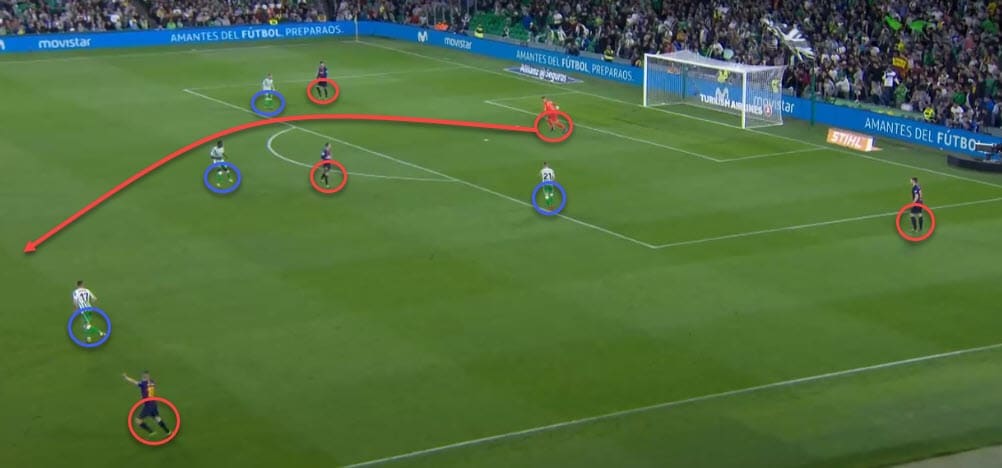
With the green and white defenders often positioned extremely high up the pitch, it was not difficult to find space for Alba to exploit. The Spaniard only needs a small head start to get the better of his marker.
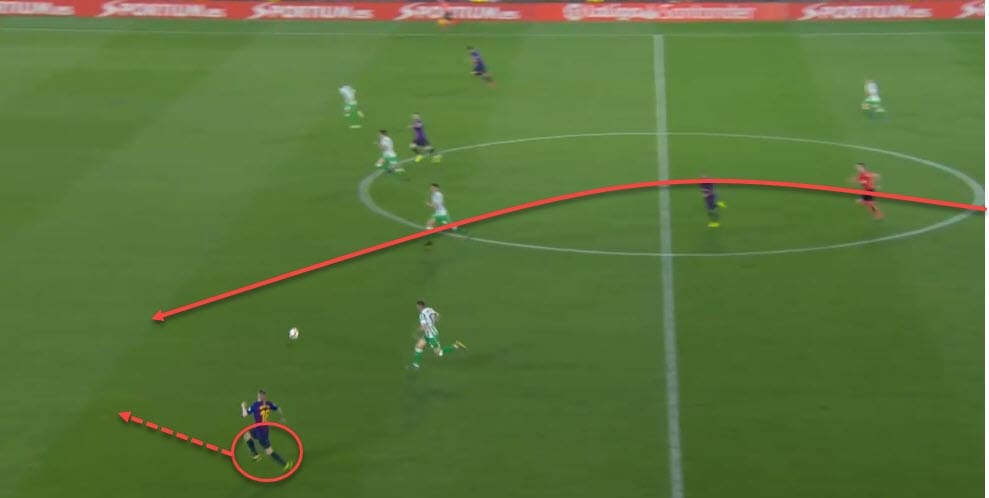
Conclusion
Real Betis were brave, proactive and dominant but they weren’t clinical in front of goal, which cost them the victory. Just by looking at the xG values (0.79 vs 2.29), the game seems much less of a disaster for them than it actually was. The difference is still there, nonetheless, and the xG stats always have difficulties catching Messi’s brilliance, but who doesn’t?
Ernesto Valverde deserves a lot of credit for organising his troops in the best possible way to counter Quique Setien’s plans. Add some individual prowess from the whole team who operated as a unit, and you have a true recipe for winning.
Barcelona seem to be rising in form, and with all the competitions they are in coming to their final stages, the timing could not have been any better. We move on.
If you love tactical analysis, then you’ll love the digital magazines from totalfootballanalysis.com – a guaranteed 100+ pages of pure tactical analysis covering topics from the Premier League, Serie A, La Liga, Bundesliga and many, many more. Buy your copy of the March issue for just ₤4.99 here, or even better sign up for a ₤50 annual membership (12 monthly issues plus the annual review) right here.

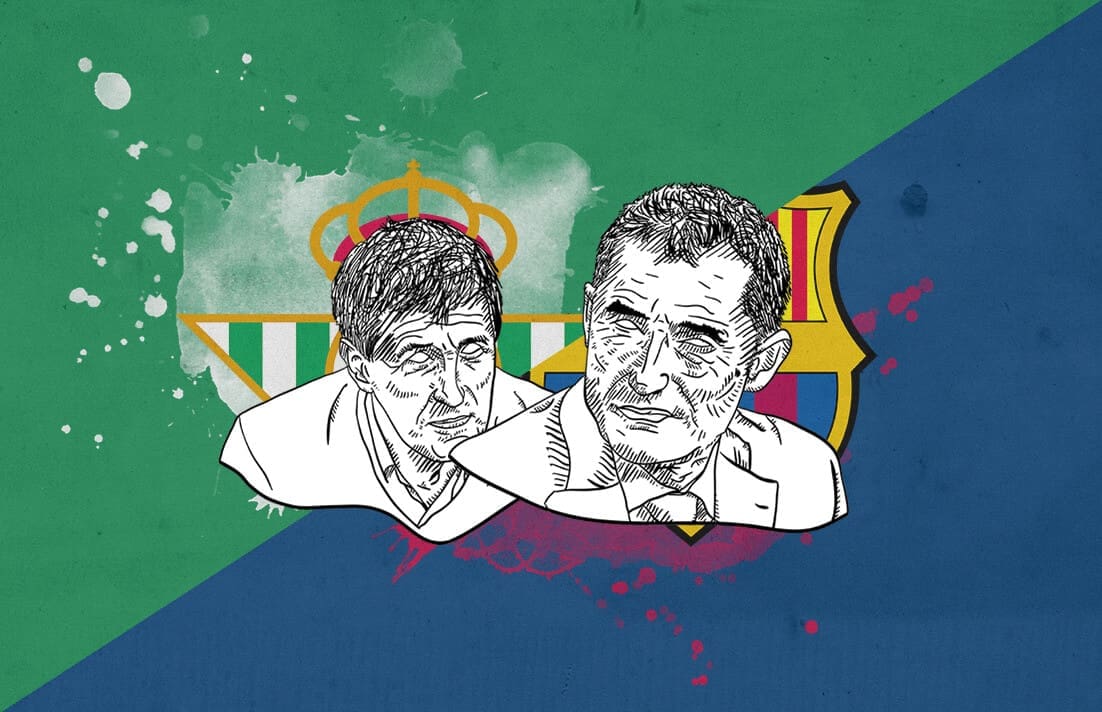




Comments